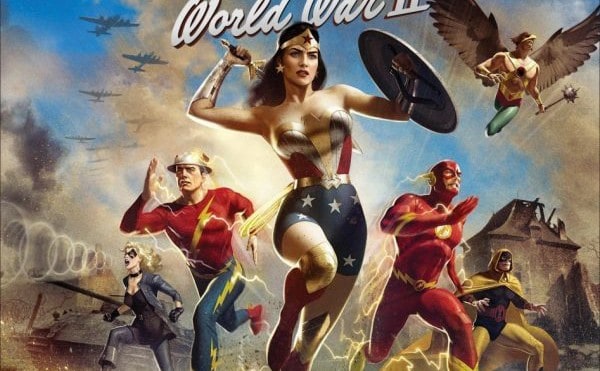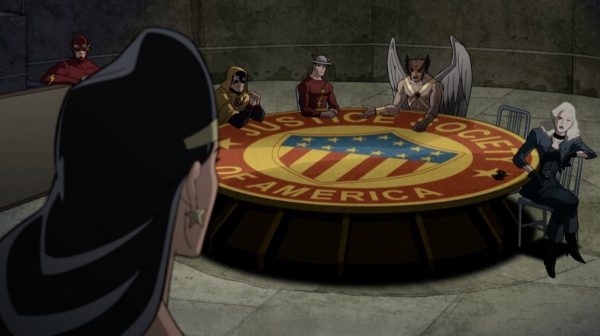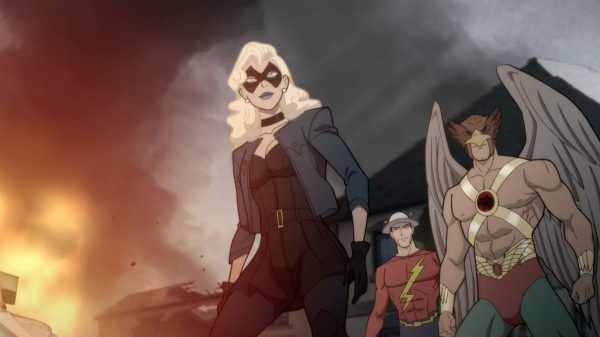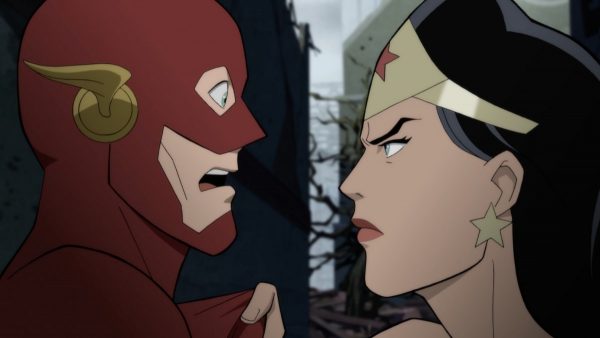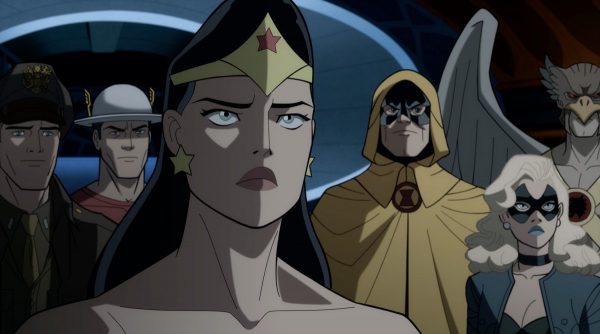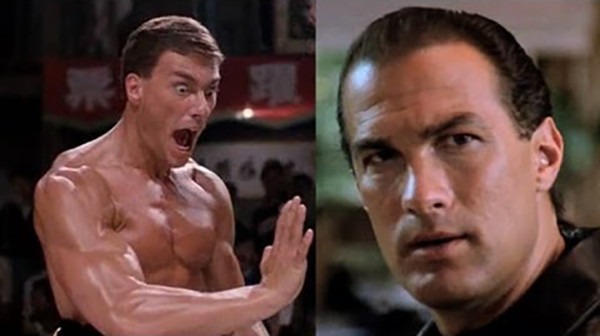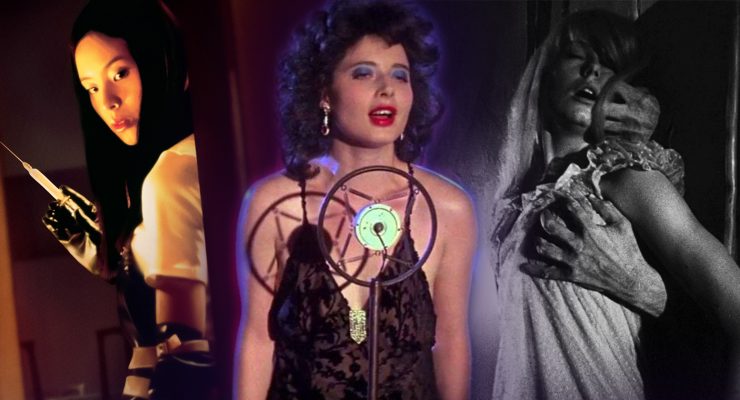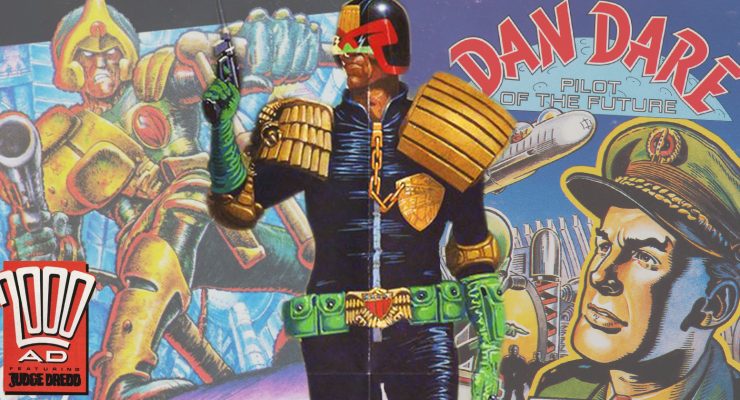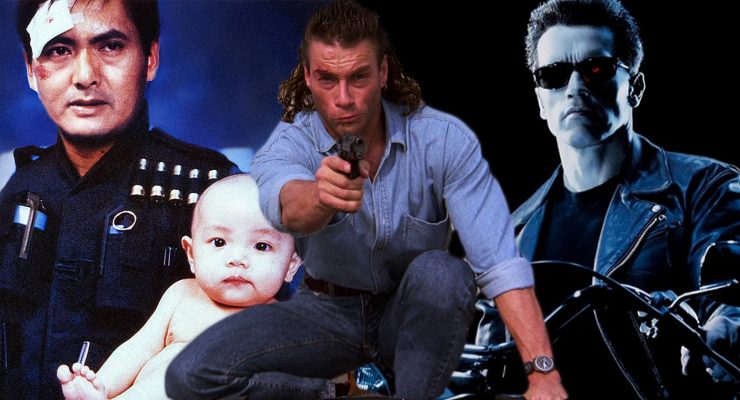Ricky Church chats with Justice Society: World War II supervising producer Butch Lukic…
Though the Justice League consists of some of the most popular superheroes in comics and has been around for decades, they are not the first superhero team in either the DC Universe or the comic book industry. In 1940 the world was introduced to the Justice Society of America, a group of heroes made up of those with superpowers, scientists or highly skilled people who went on adventures, fought supervillains and even took part in World War II, fighting for the Allies against Nazi Germany and members of the Axis.
The original line-up included characters like Jay Garrick and Alan Scott, the original Flash and Green Lantern respectively, Hourman, Doctor Fate and Hawkman with Wonder Woman and Black Canary being added to the team later. While the Justice Society may not be as popular as the Justice League now, the JSA was a pretty big title for several years after its creation and remains a favourite among fans, so much so when DC wiped away the JSA out of continuity in their 2011 reboot many fans cried foul.
In a few weeks the Justice Society will receive their first feature length animated adventure Justice Society: World War II, the latest film in DC’s line of original animated movies. It follows Barry Allen’s Flash as he accidentally travels back in time, landing in Nazi-occupied France and meets the Justice Society, a team of secret superheroes led by Wonder Woman. Flash teams up with them to uncover the Nazis’ latest scheme and find a way to travel back to his time. We got to chat with supervising producer Butch Lukic, who has worked on several DC animated series and films. As supervising producer, Lukic is overseeing the latest animated films beginning with Superman: Man of Tomorrow and the upcoming two-part Batman: The Long Halloween. Check out our interview below…
Ricky Church: Justice Society: World War II is the first time the JSA have had an animated film. Why did you think it was time for them to have an adventure like this?
Butch Lukic: Initially I just really was connected to Wonder Woman that I wanted to do a WWII story and naturally, obviously, because we also wanted to do something leaning towards the Justice League. The JSA was once the Justice League of WWII so we figured we’d create a version of how that came about. So it was initially because I wanted to do a WWII story with Wonder Woman involved and now in charge of the JSA or helping to bring the JSA together.
Cool. The team of the movie is a mix of original JSA members and some later added ones. How did you choose the lineup? Were there any heroes you wanted in the movie, but had to cut?
The guys we had to cut, we had a list, but it was basically, well, if we put Dr. Midnight in he’s about the same as using Hourman and things like that. Even with Wildcat, Black Canary kind of takes care of his action in the movie and Green Lantern was of course an original member, but we really didn’t have the space for him. And there were certain things, certain characters that were needed like Steve Trevor being part of the group and helps form the group took away some of that space where we could actually have someone like Green Lantern because there just wasn’t enough space for those characters to work together and have their own screen time.
Now you’re the supervising producer on this movie and you were the supervising producer for Superman: Man of Tomorrow, which is basically saying you’re the showrunner of these films. Can you tell us a bit of that role?
The role for showrunner is pretty much the same thing you would consider that Bruce Timm does. I start out with the script with the writers, the ideas we first produce together, which way we want the story to go and finding my crew or board artists plus the director. Then I get into the whole design aspect, the way I want the look, the colour. Also the actors, who we think would work and then the final is putting it all together, which would be editing, sound effects and adding music, finding the composer. The showrunner pretty much controls everything.
Do you have a favourite member of the JSA? If so, who and why?
Nah, not really. I mean, I really made the movie because of Wonder Woman so I’d assume her. I like Hawkman, Black Canary, Hourman. I like all of them. Even Wildcat and Green Lantern that we didn’t do. Obviously Jay Garrick. I like them all. I don’t think there’s any specific one.
Obviously with the title being World War II, war is a sensitive and heavy topic so why did you and the team decide to keep the WWII setting for the Justice Society’s origin?
One, because obviously there’s a reason for it to show our modern day Flash and why he’s involved and where he is when he shows up. It’s all based on that, why we went back to the the past, it was based on building up The Flash’s story.
The film features a fairly large ensemble of heroes with different powers. Can you talk about the process and difficulty of animating so many different heroes in the fight and emotional scenes?
Well, yeah, I mean all the time whenever you’re dealing with a group of superheroes there’s multiples you have to do in action. The best way to do it is kind of like what we did in the French village scene is separate their actions. Each one of them gets a ton to show what they could do so you don’t have them bunched up in one scene together because that’s a lot of leg work. Structurally we did it smart where you just show bits and pieces of each one of them in that bit.
Thank you very much to Butch Lukic for speaking with us!
SEE ALSO: Check out all of our Justice Society: World War II interviews here
Justice Society: World War II will be released on digital April 27th and Blu-ray May 11th.
Ricky Church – Follow me on Twitter for more movie news and nerd talk.
